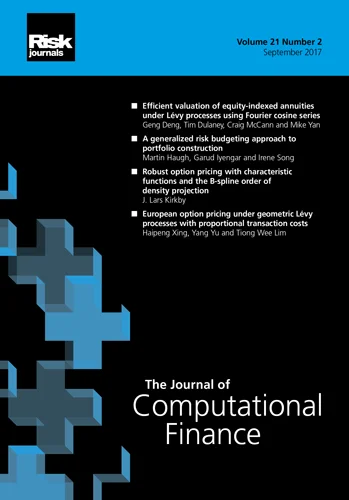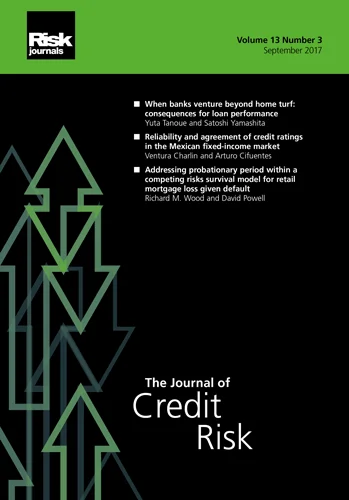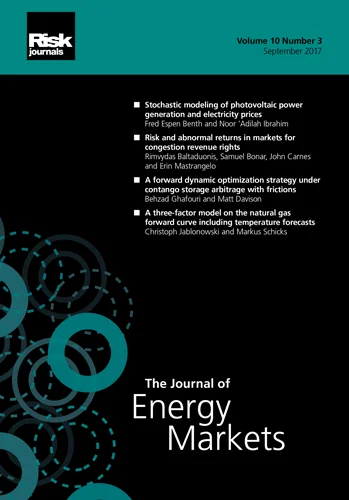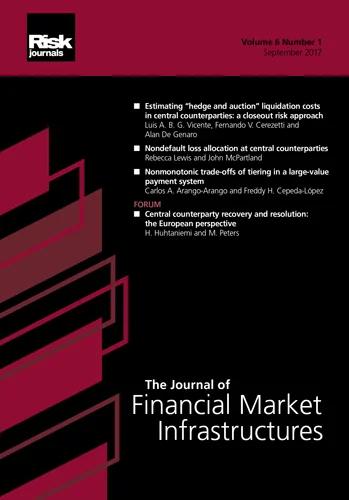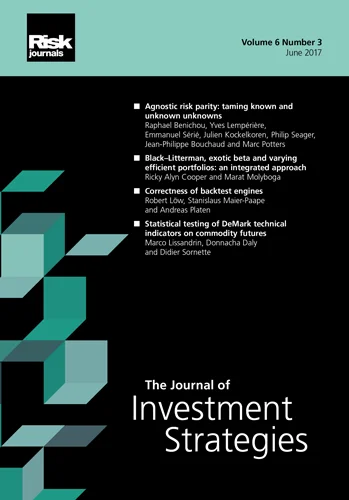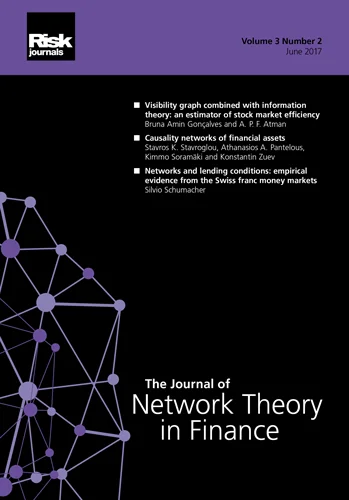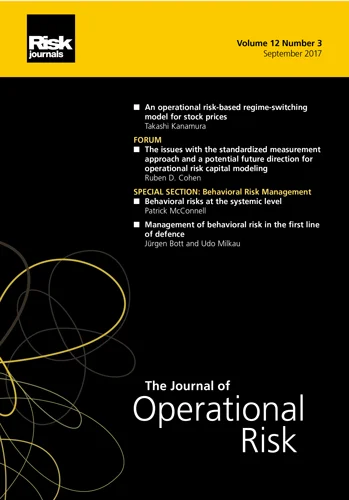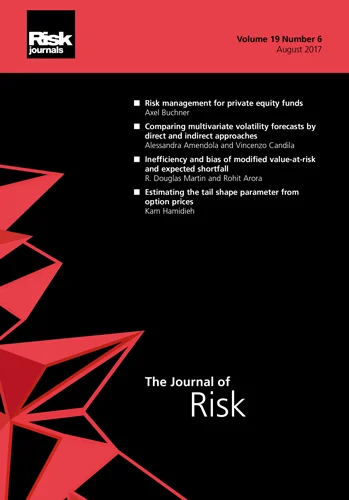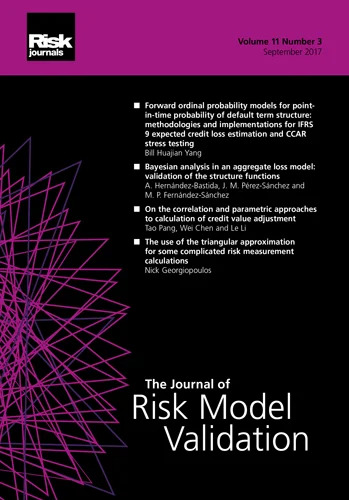Journal of Risk
ISSN:
1755-2842 (online)
Editor-in-chief: Farid AitSahlia
About this journal
This international peer-reviewed journal publishes a broad range of original research papers which aim to further develop understanding of financial risk management. As the only publication devoted exclusively to theoretical and empirical studies in financial risk management, The Journal of Risk promotes far-reaching research on the latest innovations in this field, with particular focus on the measurement, management and analysis of financial risk.
The Journal of Risk is particularly interested in papers on the following topics:
- Risk management regulations and their implications
- Risk capital allocation and risk budgeting
- Efficient evaluation of risk measures under increasingly complex and realistic model assumptions
- Impact of risk measurement on portfolio allocation
- Theoretical development of alternative risk measures
- Hedging (linear and non-linear) under alternative risk measures
- Financial market model risk
- Estimation of volatility and unanticipated jumps
- Capital allocation
- Systemic risk
- Risk management issues related to fintech and cryptocurrencies
- New methodologies for artificial intelligence and machine learning in financial risk management
Abstracting and Indexing: Scopus; Web of Science - Social Science Index; EconLit; EconBiz; ABI Research; and Cabell’s Directory
Journal Metrics:
Journal Impact Factor: 0.5
5-Year Impact Factor: 0.5
CiteScore: 0.9
Latest papers
Berms without calibration
This paper suggests semi-analytical pricing model for Bermudan swaptions based on swap-rate distributions and the correlations between them which does not require product specific calibration.
Asymptotic behavior of systemic risk based on the higher-moment capital allocation
The authors derive asymptotic formulas for systemic expected shortfall and marginal expected shortfall based on higher-moment capital allocation rules and show that systemic risk is asymptotically proportional to value-at-risk.
Forecasting extreme tail risk in China’s banking sector: an approach based on a component generalized autoregressive conditional heteroscedasticity and mixed data sampling model and extreme value theory
The authors put forward a means to forecast extreme tail risk in the Chinese banking sector - the component GARCH-MIDAS-EVT-X model.
A primer on generalized weighted risk functionals
The authors put forward a class of generalized weighted risk functionals that incorporates the possibility of arbitrary aggregations, introducing the notion of an aggregation function in the context of the aforementioned weighted risk functionals.
A robust distorted Orlicz premium: modeling, computational scheme and applications
This paper introduces the distorted Orlicz premium in an extension of Bellini et al's robust Orcliz premium and extend this to the Haezendonck–Goovaerts risk measure.
The implications of extraordinary speed in contemporary financial markets trading
This paper shows how high-frequency traders cancel many trading orders within 20 milliseconds of submission and proposes batch auctions to mitigate queuing risk for high-frequency traders.
Modeling coskewness with zero correlation and correlation with zero coskewness
The authors demonstrate that care should be taken when discussing potential links between correlation and coskewness, showing that any possible values of coskewness among symmetric random variables but zero pairwise correlations of these variables can be…
The connectedness, structure and performance of different financial networks
The authors investigate network construction methods in accurately depicting spillover effects among financial institutions.
Semiparametric GARCH models for value-at-risk and expected shortfall: an object-driven procedure
Basing their approach in object-drive smoothing, the authors calculate value-at-risk and expected shortfall via an application of semi-GARCH models.
Return to the barrier: option pricing and calibration in foreign exchange markets
The authors investigate return barrier options and how failing to capture the market’s implied volatility surface can lead to mispricing of these options.
A dynamic method-of-moments copula model approach for market risk estimates
The authors propose a method-of-moments copula technique for estimating asset portfolios' market risk, demonstrating a significant reduction in copula estimation time.
Risk parity strategies with risk factors
The authors consider risk parity in portfolio trading and compare the performance of RP portfolios against traditional value- and equal-weighted portfolios, finding RP strategies to outperform the others in most cases.
Randomization of spectral risk measures and distributional robustness
The authors offer a means to describe a decision maker's risk preferences with a randomized spectral risk measure.
How confident are we of margin model procyclicality measurements?
This paper investigates procyclicality models, bringing attention to that fact that typical measures of model responsiveness are random variables and impacted by uncertainty.
Disaster insurance swaps
This paper proposes a novel contract, called disaster insurance swaps, to help insurance and reinsurance firms hedge extreme-weather-related liabilities.
The Covid-19 pandemic and the portfolio diversification effect of catastrophe bonds
The authors delve into catastrophe bonds within an international multiasset portfolio for periods before and during the Covid-19 pandemic, showing how at different times they act as a diversifier and a safe haven.
Approximate risk parity with return adjustment and bounds for risk diversification
The authors approach diversifying risk contributions to improve returns by satisfying approximate risk parity and providing bounds on a risk spread (RS) metric that quantifies risk diversification and takes returns into account.
The power of neural networks in stochastic volatility modeling
The authors apply stochastic volatility models to real-world data and demonstrate how effectively the models calibrate a range of options.
A tale of two tail risks
This paper investigates the relationship between banking credit risk and the financial market jump hazard rate, finding the two risks to have opposing behaviors.
The impact of divergence in communication tone on investors’ willingness to invest in eurozone small- to medium-sized enterprises
The authors analyze the tone of central bank communications and how this can impact investor readiness to invest in euro areas SMEs.
